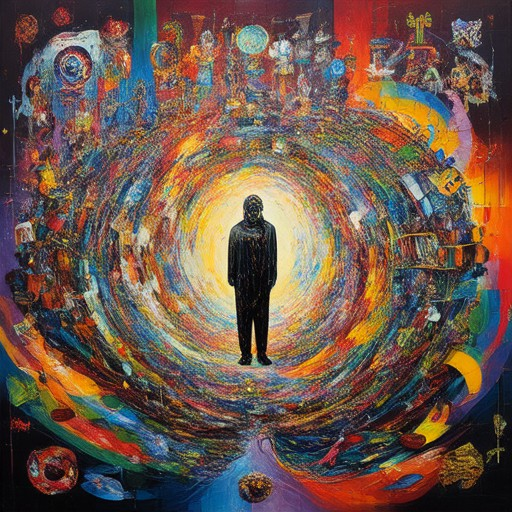Exploring the world through the lens of cultural awareness can transform your travel experiences, offering deeper connections and richer insights. As travelers, we often encounter new cultures, traditions, and perspectives that challenge our own understanding. By adopting a cultural lens, we gain the ability to navigate these differences thoughtfully, fostering mutual respect and meaningful interactions. This guide delves into the significance of cultural awareness in travel, exploring its benefits, strategies for implementation, and real-world applications that highlight its importance.
Key Takeaways
- Enhancing Cross-Cultural Interactions: Prioritize cultural awareness to avoid misunderstandings and foster positive engagements during travels.
- Promoting Meaningful Connections: Build deeper relationships with locals by understanding and respecting their customs.
- Challenging Stereotypes: Use travel experiences to dispel misconceptions and gain a more accurate understanding of diverse cultures.
- Supporting Sustainable Tourism: Contribute to environmental preservation by adhering to local customs and eco-friendly practices.
- Boosting Communication Skills: Develop cross-cultural communication abilities to navigate social and linguistic barriers effectively.
- Fostering Personal Growth: Expand your worldview through immersive cultural experiences, encouraging empathy and adaptability.
- Enriching Travel Experiences: Gain authentic insights into local traditions, making your travels more memorable and educational.
- Encouraging Responsible Tourism: Play a role in protecting cultural heritage and promoting sustainable travel practices.
- Facilitating Cultural Exchange: Engage in meaningful dialogues and collaborations with local communities, bridging global connections.
- Preparing Future Travelers: Equip yourself with cultural awareness to become a more informed and respectful traveler.

Cultural Lens Example
A cultural lens refers to a framework through which individuals interpret and understand the world around them. It shapes their perceptions, values, and beliefs, influencing how they engage with various aspects of life, including art, media, social interactions, and more. A classic example of a cultural lens in action is the concept of cultural relativism , which emphasizes the importance of understanding different cultures from within their own contexts rather than judging them by one’s own standards.
For instance, consider the Cultural Lens Project developed at the MIT Media Lab. This initiative allows individuals to filter public images based on their cultural norms, enabling them to see representations that align with their values. For example, someone who values modesty might choose to hide revealing clothing in public images, while another person might opt to keep all appearances visible. This tool demonstrates how cultural frameworks can shape perception and interaction with visual media.
The concept of a cultural lens also applies to social interactions. Imagine a scenario where two people from different cultural backgrounds are communicating. Each person brings their own cultural lens to the conversation, influencing how they interpret gestures, words, and intentions. This dynamic can lead to misunderstandings if not managed effectively, highlighting the importance of cultural awareness in cross-cultural communication.
Moreover, cultural lenses extend beyond visual media to include literature, history, and even science. For example, historical interpretations of events like the Renaissance or the Enlightenment are often colored by the cultural biases of the scholars studying them. This shows that cultural lenses are not just about individual preferences but also about collective narratives and societal influences.
In summary, a cultural lens is a powerful tool for understanding how individuals and groups construct meaning and navigate the world. By recognizing and critically examining our own cultural lenses, we can gain greater insight into human behavior, societal dynamics, and the complexities of cultural exchange.
Cultural Sensitivity When Traveling
Cultural sensitivity is essential for every traveler to ensure respectful and meaningful interactions with locals. It involves understanding and respecting the customs, values, and beliefs of the people in the destination you’re visiting.
Here are the key aspects of cultural sensitivity when traveling:
- Research Local Customs : Before your trip, take time to learn about the cultural norms, such as dress codes, greetings, and social behaviors. This knowledge will help you navigate social situations and show respect for the local culture.
- Respect Gender Roles : Understand and respect the gender roles in the local society. Avoid making assumptions or actions that may be considered inappropriate or offensive.
- Be Mindful of Religion : Many cultures have religious practices that are deeply rooted. Respect local religious customs, such as attending services or avoiding certain days or times.
- Understand Communication Styles : Different cultures communicate differently. Observe body language, tone, and verbal cues to ensure your interactions are appropriate and well-received.
- Be Open to Learning : Cultural sensitivity is a continuous process. Be open to learning from the local community and adapting your behavior accordingly.
- Observe Non-Verbal Cues : Pay attention to non-verbal signals, such as facial expressions and gestures, which often convey emotions and intentions in ways words cannot.
- Be Flexible : Cultural practices can vary widely, and sometimes misunderstandings can occur. Approach interactions with flexibility and a willingness to adapt.
- Avoid Judging Local Practices : Cultural sensitivity doesn’t mean agreeing with every practice. Instead, approach them with curiosity and respect, understanding that they reflect the local community’s values.
- Learn Basic Phrases : Knowing a few phrases in the local language can demonstrate your interest in connecting with the culture and may also facilitate better communication.
- Seek Guidance from Locals : Engage with locals or tourism authorities who can provide insights into what is expected and appreciated in the area.
For further reading on cultural sensitivity and travel tips, explore our guides on cultural exploration and travel tips .

Cultural Lens Approach
The Cultural Lens Approach is a framework used to enhance understanding and awareness by examining issues through the prism of different cultural perspectives. This method encourages individuals to consider how cultural values, beliefs, and practices shape their views and interactions with the world.
The approach was developed by Dr. James A. Banks, an educational theorist, to promote cultural competence in teaching and learning. It provides a structured way to analyze and address cultural differences, ensuring that diverse perspectives are taken into account.
Key Components of the Cultural Lens Approach
- Dominant Lens: Represents the majority perspective within a culture, often influenced by institutional power structures and dominant discourses.
- Marginalized Lens: Highlights the voices and experiences of groups that are often overlooked or undervalued in mainstream narratives.
- Alternating Lens: Encourages switching between different cultural perspectives to see how viewpoints can change based on context and culture.
- Critical Lens: Analyzes the underlying assumptions and power dynamics that influence cultural representations and interpretations.
Applications
The Cultural Lens Approach is widely applied in education, training, and organizational development. It helps in fostering inclusivity, reducing bias, and promoting cross-cultural communication. For instance, in educational settings, it can be used to create culturally responsive curricula that acknowledge the diverse backgrounds of students.
Benefits
- Improves cultural sensitivity and awareness.
- Facilitates more inclusive decision-making processes.
- Enhances interpersonal and intercultural relationships.
- Supports organizations in becoming more culturally competent.
To learn more about applying the Cultural Lens Approach in your organization or classroom, visit Bending Borders for resources and tools designed to foster cultural understanding and bridge divides.

Why Is Cultural Awareness Important In Travel?
Cultural awareness plays a vital role in travel, ensuring that visitors respect and appreciate the local customs, traditions, and societal norms. Here are the key reasons why it matters:
- Avoiding Misunderstandings : Cultural awareness helps travelers recognize and avoid behaviors that might be considered rude or disrespectful in another culture. This prevents potential conflicts and ensures positive interactions.
- Building Connections : Understanding the local culture fosters deeper connections with hosts, making travel experiences more meaningful and memorable. It often leads to warmer welcomes and more authentic exchanges.
- Challenging Stereotypes : Travel offers a chance to experience a culture firsthand, which can challenge and dispel any negative stereotypes or misconceptions one might hold.
- Sustainable Tourism : By respecting local customs, travelers contribute to sustainable tourism practices. This approach ensures that their presence benefits the local economy and environment.
- Effective Communication : Cultural awareness enhances cross-cultural communication skills, helping travelers navigate language and social barriers more effectively.
- Personal Growth : Immersive cultural experiences encourage self-reflection and broadening of perspectives, fostering personal development and a greater appreciation for diversity.
In essence, cultural awareness enriches travel experiences, promoting respect, understanding, and meaningful connections between travelers and host communities.
Why is Travel and Culture Important?
Traveling and immersing yourself in different cultures offers numerous benefits that extend beyond just the experiences themselves. Here are the key reasons why travel and culture matter:
- Personal Growth and Development: Traveling allows individuals to step out of their comfort zones, fostering empathy, adaptability, and critical thinking skills. Exposure to diverse perspectives helps shape a more open-minded and informed worldview.
- Broadening Perspectives: By encountering different customs, traditions, and lifestyles, travelers gain a deeper understanding of global diversity. This appreciation fosters mutual respect and reduces cultural misunderstandings.
- Educational Opportunities: Travel provides hands-on learning experiences that complement traditional education. Observing historical sites, interacting with local communities, and participating in cultural activities enriches knowledge and enhances learning.
- Cultural Exchange and Connection: Travel promotes cross-cultural dialogue and collaboration. Engaging with different cultures strengthens global connections and builds bridges between people from various backgrounds.
- Stress Relief and Mental Health: Exploring new environments often reduces stress and anxiety. The unfamiliarity of travel can be refreshing and provide a break from routine, contributing to overall mental well-being.
- Sustainable Tourism: Travelers can play a role in preserving cultural heritage and promoting sustainable practices. By choosing eco-conscious accommodations and activities, visitors contribute to the protection of natural and cultural landmarks.
- Building Relationships and Networks: Traveling often leads to meaningful connections with locals and fellow travelers. These relationships can lead to collaborative opportunities, friendships, and a stronger sense of community.
- Insight into History and Traditions: Traveling allows individuals to delve into the history and traditions of different regions. This exposure helps in understanding the evolution of societies and the significance of cultural practices.
- Economic Contribution: Cultural tourism supports local economies by generating employment and revenue. Preserving and promoting cultural heritage ensures the survival of traditions and contributes to the economic development of destinations.
- Self-Discovery and Identity Formation: Traveling can help individuals reflect on their own values and identity. Experiencing different cultures challenges assumptions and encourages personal growth, leading to a clearer sense of self.
By embracing travel and cultural experiences, we not only enrich our own lives but also contribute positively to the global community. Whether for education, personal growth, or simply curiosity, the impact of travel extends far beyond the journey itself.
For more insights into cultural exploration and travel tips, visit Bending Borders . Explore unique destinations, travel stories, and cultural insights designed to inspire your next adventure.

Cultural Awareness: Its Importance and Benefits
Cultural awareness is essential for fostering understanding, reducing conflicts, and promoting harmony in various aspects of life. Here are the key reasons why it matters:
1. Enhanced Communication
Cultural awareness improves communication by helping individuals navigate linguistic, behavioral, and social differences. In professional settings, it aids in effective teamwork and collaboration, particularly in multinational environments.
2. Reducing Conflicts
In diverse workplaces, cultural awareness can minimize misunderstandings and conflicts. By appreciating different customs and values, employees can work more cohesively, leading to a more positive and productive atmosphere.
3. Promoting Equality and Inclusion
Cultural awareness contributes to creating an inclusive environment where everyone feels valued. It helps organizations address potential biases and ensures policies and practices consider diverse perspectives.
4. Improving Education
In educational settings, cultural awareness enriches the learning experience by exposing students to different viewpoints. It prepares future leaders to thrive in a globalized world where cross-cultural interactions are common.
5. Facilitating Travel and Tourism
For tourists, cultural awareness enhances travel experiences by encouraging respectful behavior toward local traditions and customs. It supports sustainable tourism and enriches cross-cultural exchanges.
6. Healthcare Advancements
Understanding cultural differences in healthcare settings improves patient outcomes. Tailored care based on cultural background ensures that treatments are more effective and patients receive the support they need.
7. Building Global Communities
In today’s interconnected world, cultural awareness is crucial for building resilient and inclusive communities. It bridges gaps between different groups and promotes mutual respect, ultimately contributing to societal well-being.
8. Economic Growth
A culturally aware workforce can drive innovation and productivity. Companies that embrace diversity often see improved employee satisfaction and retention rates, which positively impact their bottom line.
9. Social Cohesion
Cultural awareness strengthens social bonds within communities. It encourages empathy and understanding, reducing prejudice and discrimination, and fostering a sense of belonging among all members.
10. Preparing Future Generations
Educating children about different cultures equips them to navigate an increasingly globalized world. It instills values of respect and open-mindedness, preparing them to become empathetic global citizens.
Conclusion
Cultural awareness is a cornerstone of progress and development. By embracing and valuing diverse perspectives, we can build a more equitable and harmonious society. It is not just an ideal; it is a necessity for our interconnected world.




0 Comments